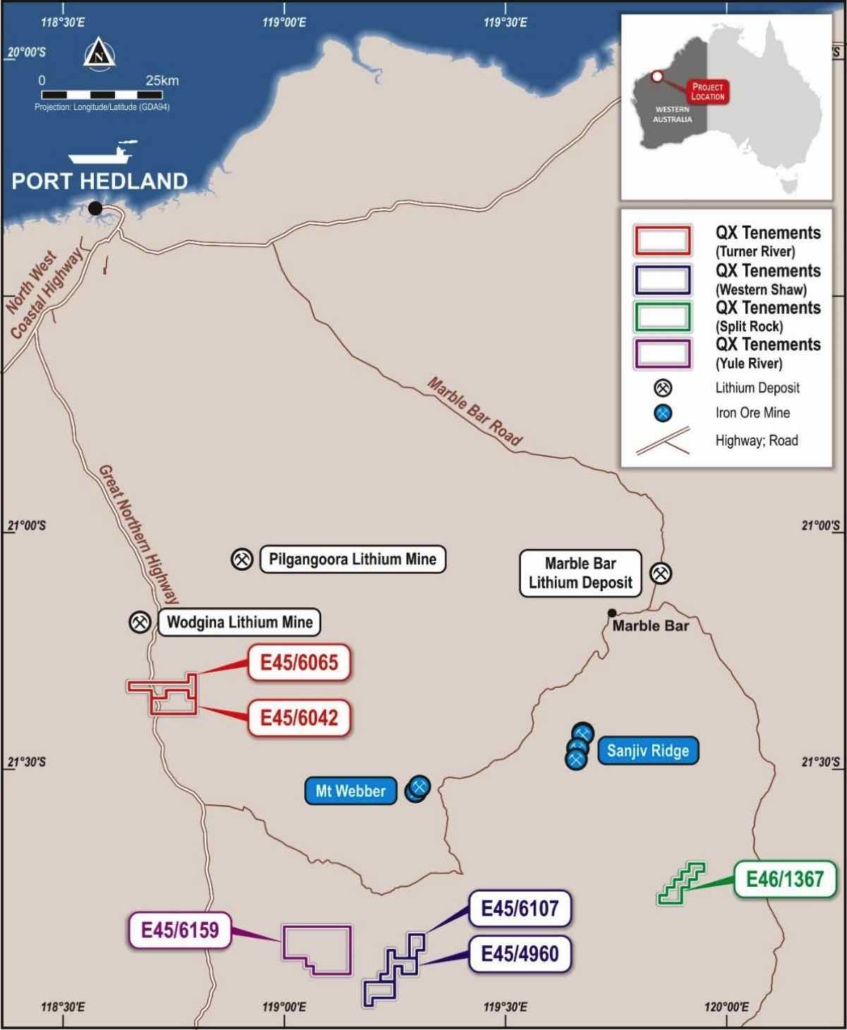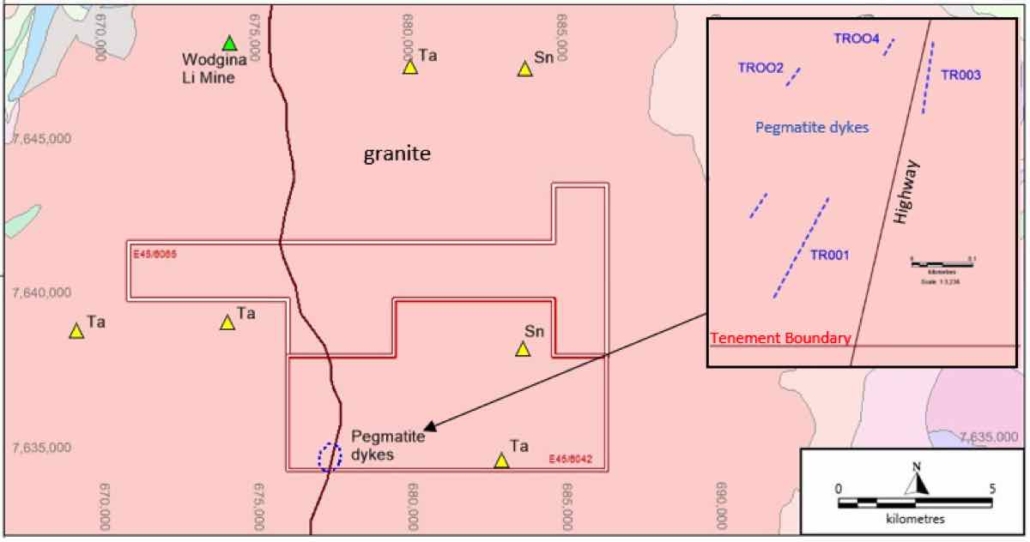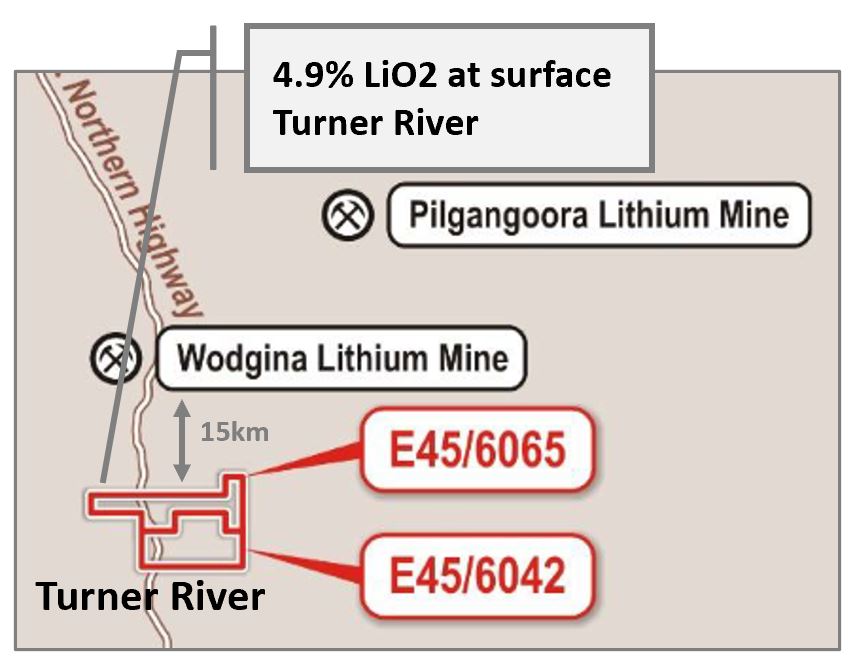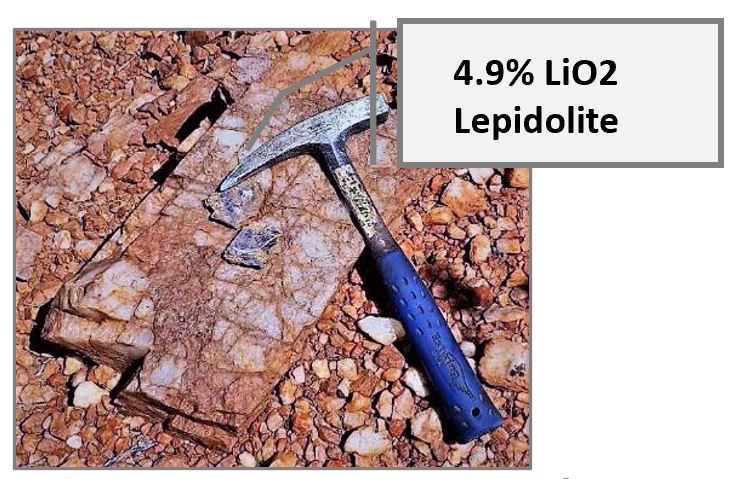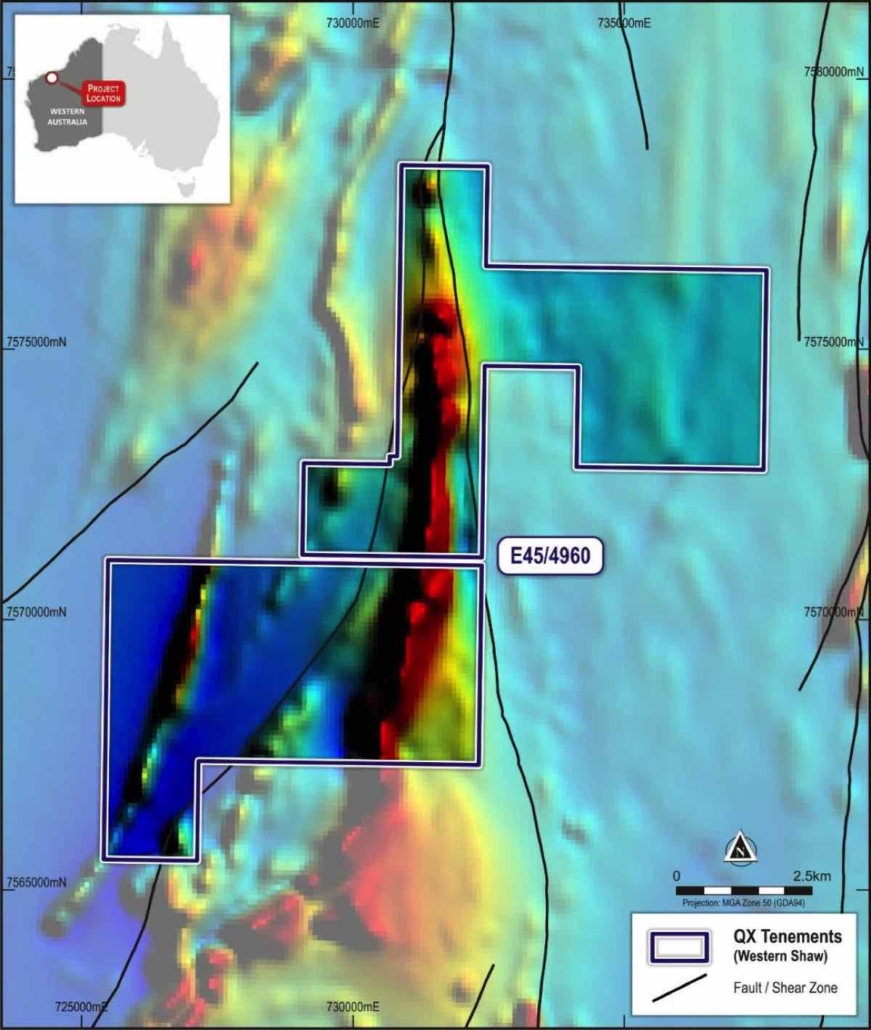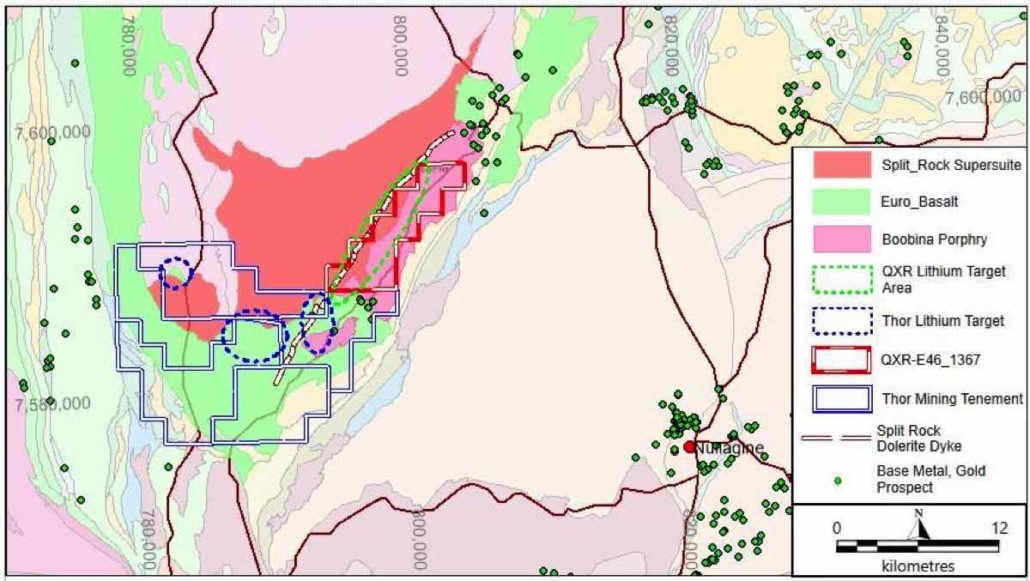Location and Access
The Turner River lithium projects is located ~120km south of Port Headland, with access provided along the Great Northern Highway. The tenement starts about 12km south of the access turn-off for the Wodgina mine site (Figure 1).
Regional Geology
The Wodgina Greenstone Belt is dominated by mafic volcano-sediments with lesser, but still significant, quantities of epiclastic sediments, cherts and BIF’s. Lithologies are predominantly metamorphosed to amphibolite facies, however there are remnants of unaltered basalts and sediments in the more central portions of the belt. The western portion of the Wodgina Greenstone Belt comprises mafic volcano-sediments that are highly strained and metamorphosed consistently to amphibolites. They have a well-developed metamorphic fabric with a consistent NNE trend and NW dip. The eastern portion of the belt comprises mafic volcano-sediments and sediments which have undergone varying amounts of strain and metamorphism.
Regionally, lithium bearing pegmatites are focussed near N-NW trending lineaments, faults or granitic dykes, with the regional N-NW foliation having a significant influence during emplacement (Figure 2).
Exploration Potential
Previous exploration work at the Turner River lithium project has included geological mapping and geochemical sampling, however historical work has been limited and sporadic in nature. In the northeast of the tenement is the historic Turner River tin prospect; while in the south there is the Mt Francisco alum prospect (Figure 2).
A review of the remote sensing data highlighted 4 preferred areas for follow-up investigation and sampling programs. Principal targets were along the central north-northeast trending structural zone, with the central 2 zones parallel to the strike of the pegmatites at the Wodgina lithium mine (Figure 6). Previous reconnaissance in the central zone confirmed the presence of shallow dipping pegmatite dykes (Refer to ASX Announcement 21 October 2021). The recent field program further investigated the spatial extent of this previously identified pegmatite dyke swarm both laterally and along strike as well as undertaking systematic sampling to test the mineralogical variability of the pegmatites and their potential to host lithium bearing minerals. Additionally, the field crew was able to identify a number of additional pegmatite dykes of varying thicknesses up to 3m and traced along strike for over 300m

